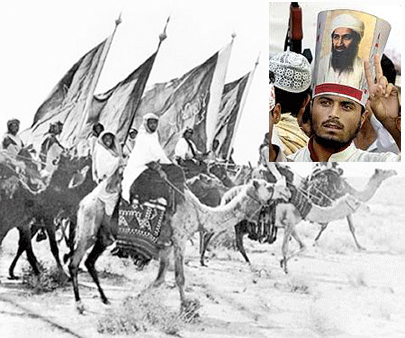
Wahhabism, Salafism and Islamism: Who Is The Enemy?
by Ahmad Moussalli, Conflicts Forum, January, 2009
This essay constructs and deconstructs three main discourses created by different and opposing trends in modern Islamic thought that are normally and mistakenly lumped together as Islamism, fundamentalism, salafism, neo-salafism, Wahhabism, jihadism, political Islam, Islamic radicalism and others. I will compare and contrast between them by developing a typology of major ideologies of active Islamic trends that centers specifically on Wahhabism and neo-Wahhabism, salafism and neo-salafism, and Islamism, both moderate and radical. Understanding these trends and their discourses will allow world powers, policymakers, academicians, intellectuals, terrorism experts, journalists, and many others to distinguish between and understand the logic of the radical and the moderate, the active and the inactive, the jihadi and the peaceful, the takfiri and the tolerant, the modern and the traditional, and the rational and irrational. This essay will also clarify the terminology used chaotically by different policy-makers, analysts, journalists, academicians, and intellectuals. Although all Islamic trends use similar literal doctrines and concepts such as jihad, Islamic state, al-shari‘a or prophetic traditions, their connotations and discourses differ importantly from one trend to another. This makes their implications serious in action, massive in repercussions, and fundamental for understanding.
Salafism is a very diversified and complicated ideologically and religiously motivated trend and is thus not constructed by one unified discourse or group or authority. As a rule, all Wahhabis are salafists, but not all salafists are Wahhabis. Islamism is also another complex trend that includes moderate and radical movements, but it is not equivalent to Wahhabism: it is actually its antithesis. While Islamism and Wahhabism/salafism share a few theological and intellectual doctrines, they are theologically and politically very different. However, after September 11, 2001 and the invasion of Iraq, some Wahhabis and salafists merged together with radical Islamists and consequently have created neo-salafism and takfiri-jihadism. This complexity thus appears in the takfiri-jihadists that are composed of both neo-Wahhabis, neo-salafists, and radical Islamists. Again, not all takfiris are jihadist, and not all jihadists are takfiri. To understand these seemingly similar yet very complex religious, ideological, and political manifestations, the essay explains separately each ideology, outlines the basic discourse of their trend, and then shows in a comparative manner the similar and different principles and interpretations. The conclusion first shows how these trends and their movements and groups are manipulated by different governmental and non-governmental powers and, second, draws up the profiles of neo-salafist, neo-Wahhabi, and takfiri-jihadist and their practical impacts on the politics of the world today.
Read the complete monograph [PDF] at the website.
Dr Ahmad Moussalli is Professor of Political Science and Islamic Studies at the American University of Beirut. He has a PhD from the University of Maryland (College Park, Maryland); an MA from St. John’s College, (Santa Fe, New Mexico); and a BA from Al-Azhar University (Cairo). His fields of expertise include Islamic Political History and Thought, Ideologies of Contemporary Islamic Movements, East/West relations, Globalization, and the Arab-Israeli Conflict. He has written extensively on issues of Islamist ideologies and politics, East-West relations, and Middle Eastern Politics. His numerous writtings are published world-wide in tens of journals and collections and in publishing over fifteen books, including U.S. Foreign Policy and Islamist Politics (2008); A History of Islamic Legal Theories (2007); Dialectics of Shura and Democracy: Democracy and Human Rights in Islamic Thought (2007); Encyclopedia of Islamic Movements in the Arab World, Iran and Turkey (2005); Islamic Movements: Impact on Political Stability in the Arab World (2004); Images of Islam in the Western World and Images of the West in the Islamic World (2003); The Islamic Quest for Democracy, Pluralism, and Human Rights (2003); Roots of the Intellectual’s Crisis in the Arab (2002); Moderate and Radical Islamic Fundamentalism: the Quest for Modernity, Legitimacy and the Islamic State (2001); Islamic Fundamentalism: Myths and Realities (1999).